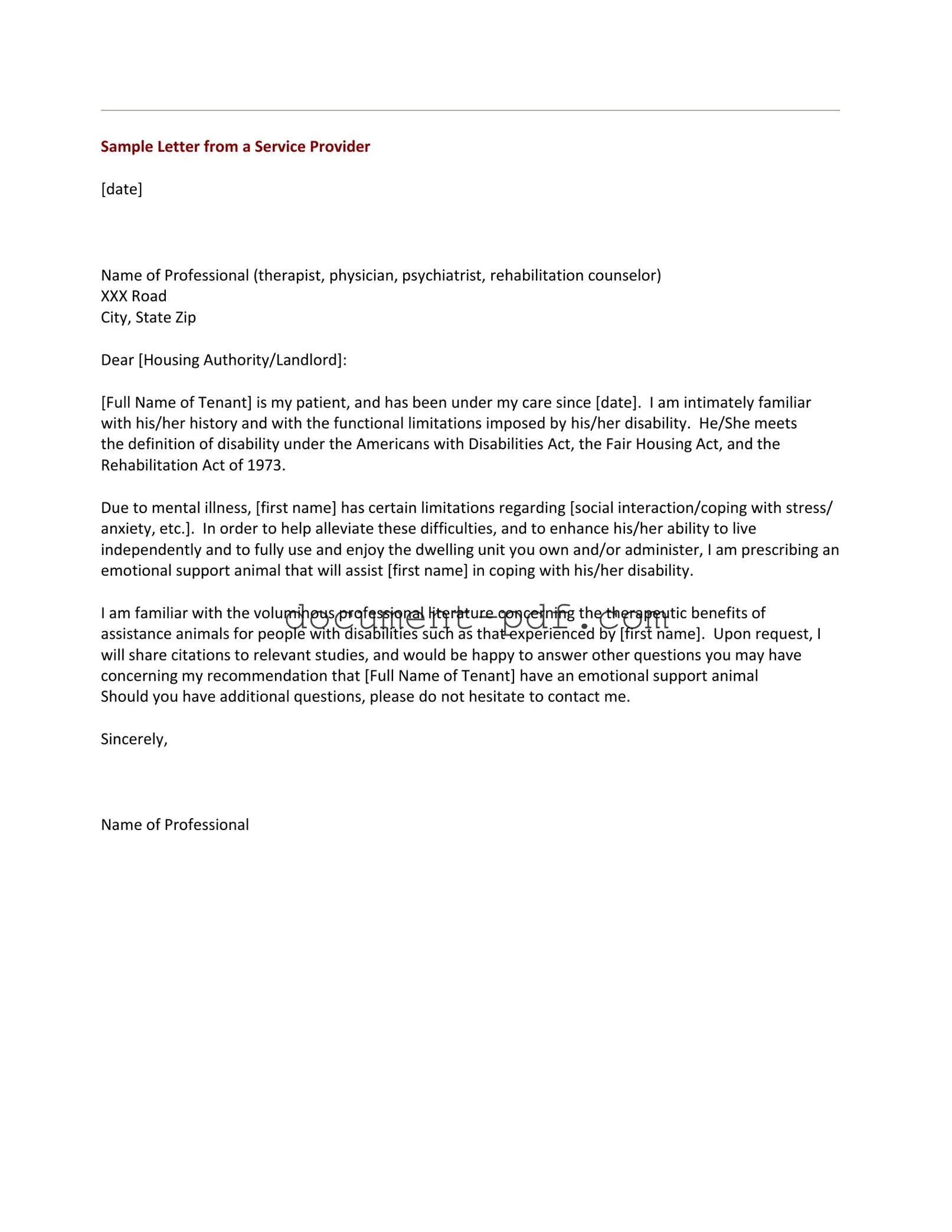The Emotional Support Animal (ESA) Letter is often compared to a service animal certification. Both documents serve to support individuals with disabilities, but they differ in their legal implications. A service animal certification specifically pertains to animals trained to perform tasks for individuals with disabilities, such as guiding those who are visually impaired. In contrast, an ESA letter does not require the animal to perform specific tasks; rather, it provides emotional support to individuals with mental health conditions. While service animals have more stringent access rights under the Americans with Disabilities Act (ADA), ESAs are primarily recognized under housing laws and certain travel regulations.
Another document similar to the ESA letter is the Psychiatric Service Animal (PSA) letter. Like the ESA letter, a PSA letter is issued by a licensed mental health professional. However, a PSA is a type of service animal trained to assist individuals with psychiatric conditions. The PSA letter grants the animal access to public places where service animals are permitted, aligning more closely with the ADA's provisions. This distinction is crucial, as it highlights the different levels of training and legal rights associated with each type of animal.
A letter from a mental health professional for therapy animals also shares similarities with the ESA letter. Therapy animals are often used in therapeutic settings to provide comfort and support to multiple individuals, rather than being assigned to a single person. While the ESA letter is tailored to the needs of an individual, a therapy animal letter may be used by organizations to certify animals that participate in therapy programs. Both documents emphasize the mental health benefits of animal companionship, but their applications and legal standings differ significantly.
The breed-specific letter for emotional support animals can also be likened to the ESA letter. This document may be required by certain housing providers to ensure that the animal meets specific breed standards. While the ESA letter focuses on the individual's need for emotional support, the breed-specific letter addresses the characteristics of the animal itself. This distinction can impact housing decisions and the acceptance of certain breeds in various living situations.
A medical recommendation letter is another document that bears resemblance to the ESA letter. Such a letter is often issued by healthcare providers to recommend specific treatments or interventions for patients. In the context of emotional support, a medical recommendation letter may suggest the inclusion of an emotional support animal as part of a comprehensive treatment plan. However, unlike the ESA letter, it may not carry the same legal protections for housing or travel.
Understanding the significance of a comprehensive Power of Attorney document can be vital for ensuring that your personal and financial affairs are handled according to your wishes, especially in times when you may be unable to make decisions for yourself. This form grants another individual the authority to act on your behalf, which can include managing financial transactions or making healthcare choices. Properly documenting this arrangement is essential for future planning.
The Fair Housing Act (FHA) request letter is also similar in purpose to the ESA letter. Under the FHA, individuals with disabilities can request reasonable accommodations, which may include the presence of an emotional support animal. The FHA request letter outlines the individual's need for an ESA and serves to inform housing providers of their rights. Both documents aim to ensure that individuals with disabilities can access necessary support, though the FHA request letter is specifically tied to housing rights and regulations.
Lastly, the disability verification letter from a healthcare provider is akin to the ESA letter. This document serves to confirm an individual's disability status and may be used in various contexts, including employment or housing. While the ESA letter focuses on the need for an emotional support animal, the disability verification letter provides a broader overview of the individual's condition. Both documents are essential in advocating for the rights of individuals with disabilities, but they serve different functions in the legal landscape.

